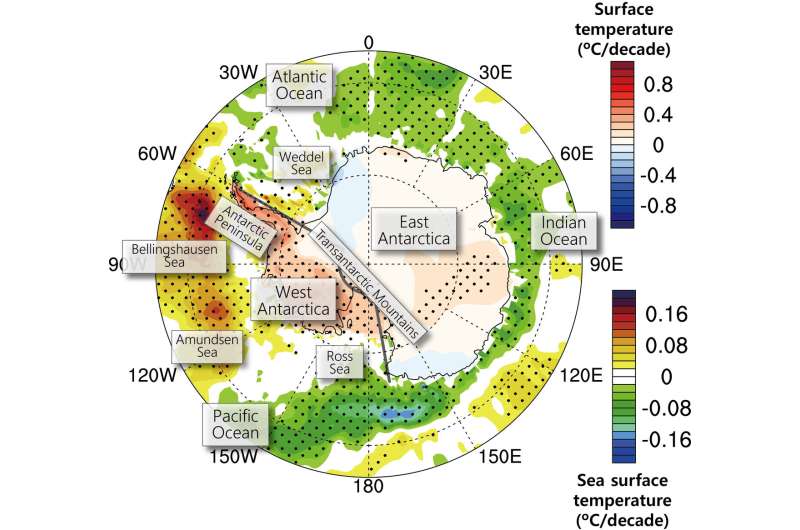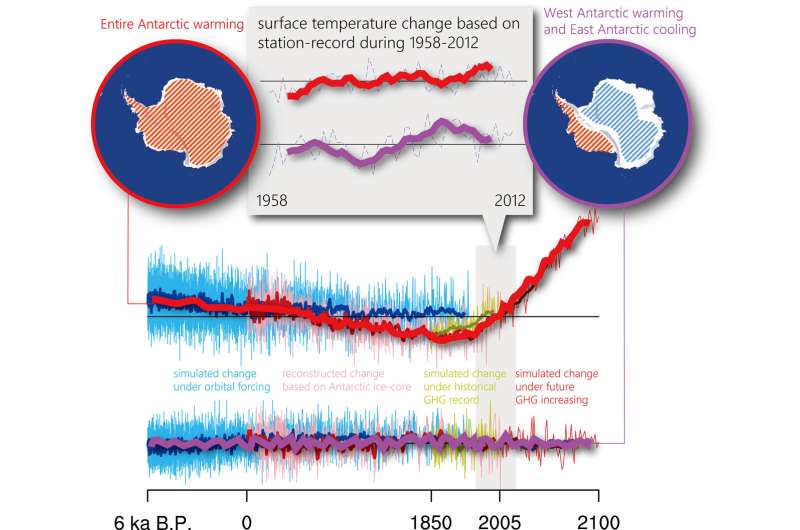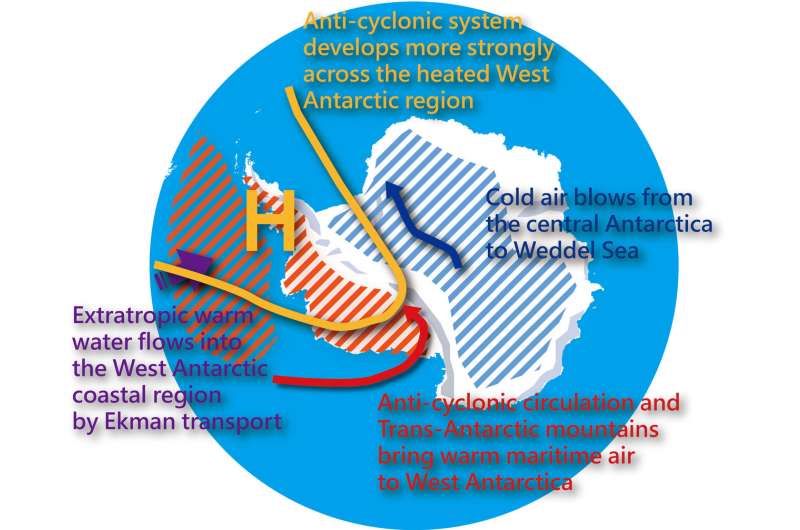Linear trends of surface air and sea surface temperatures surrounding Antarctica since the mid-20th century. Credit: Dr. Sang-Yoon Jun at Korea Polar Research Institute
A team of researchers affiliated with several institutions in South Korea has found a possible reason for West Antarctica warming faster than East Antarctica. In their paper published in the journal Science Advances, the group describes their study of surface and air temperature trends in the region over the past several decades in which they applied math models to the problem, and what they found.
Scientists have known for some time that Antarctica has been warming asymmetrically due to global warming, but they have not known why. To find an explanation for the differences, the researchers began with the assumption that such differences were likely due to natural climate variability. To find out if this might be the case, they carried out a two-part study.
The first part of the study involved studying climate data for the region over the years 1958 to 2012. Their goal was to see if they could spot trends. The second part of the study involved applying an empirical orthogonal function to the weather data to explain variability over time. In so doing, they found that warming sea surface temperatures in the Bellingshausen Antarctic and Amundsen seas appeared to be a driving force behind the asymmetrical warming. They also found variability in surface air temperatures over the course of multiple decades, which they attributed to climate fluctuations in the tropics (such as the El Niño Southern Oscillation)—they suggest such fluctuations also likely play a role in differences in the amount of warming in Antarctica.
Schematic spatial patterns of the externally forced Antarctic warming and the self-sustained internal mode of Antarctic west-east climate asymmetry. Credit: Dr. Sang-Yoon Jun at Korea Polar Research Institute
More specifically, the researchers found that the asymmetric conditions originated from the harmony of the feedback between the atmosphere over the ocean versus that over the terrain. And warmer sea temperatures near the western parts of Antarctica had a positive feedback with the upper atmospheric conditions found over the western parts of the region. And finally, they report that the strength of the feedback in the region was controlled by the topography and an annual cycle. They conclude their assessment by suggesting that the climate differences that have been observed in the region are likely due to natural climate variability factors responding to global warming.
Illustrative schematics of the atmospheric and oceanic circulations associated with the surface temperature changes of the self-sustained internal mode. Credit: Dr. Sang-Yoon Jun at Korea Polar Research Institute
The researchers also suggest that natural climate factors could also result in spikes in temperatures over the eastern parts of Antarctic in the coming years, even as western parts of the region continue to see rising temperatures. They note that such conditions could lead to ice sheet collapse, adding to a rise in sea levels.
More information: Sang-Yoon Jun et al. The internal origin of the west-east asymmetry of Antarctic climate change, Science Advances (2020). DOI: 10.1126/sciadv.aaz1490
Journal information: Science Advances
© 2020 Science X Network


























